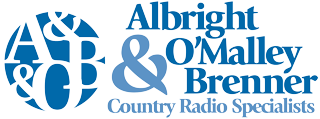- 06/19/2008
- Posted by: Mike O'Malley
- Category: radio programming
Yogi Berra said, “You can observe a lot by watching.”
And you can hear a lot just by listening – provided of course you know what you’re listening for and that your listening is an active rather than a passive activity.
I recently spoke on ‘how to critically listen to your radio station’ at a group’s GM meeting The goal was to help them be better critical listeners of their stations by identifying key programming elements and creating a framework to help them evaluative what they heard.
Of course these ideas are appropriate for programmers as well.
Here’s a three-step plan for how to critically listen to your station. Use it to compare your plan vs. your performance, your intentions vs. your execution.
STEP 1: Create a listening plan.
“Critical listening” means evaluating what you hear. But because there are so many components to the final product, your critical listening will be more effective if you have a plan that will serve as a reminder of what’s important and help you focus your listening. It will also keep you from becoming sidetracked by any single thing, good or bad.
Later the plan will help you assess what you’ve heard.
Develop your listening plan with your PD so you’re both on the same page.
Start your listening plan by completing the following:
1. Broad and narrow target demos:
• Their Lifegroup Values:
• What’s most important to them this week:
• What are the needs/wants/likes of the station’s fans vs. its cumers
2. Music position and focus:
3. Specific ratings goals:
4. Unique value positions or ‘advantage(s)’ (maximum of 2):
5. Most important activities going on at the station this week:
STEP 2: Record specific evaluations and observations as you’re listening.
Make notes on how closely the on air product matches each of the items in your listening plan. Consider:
1. Overall, how aligned is the product to the target listener’s tastes and values?
2. Is the music position and focus is clear and reflective of the overall strategy?
3. Can you readily discern the station’s unique advantage(s) and core benefit(s)?
4. Does the imaging reflect the right attitude and communicate relevant messages?
5. Are today’s most important station elements and tactics receiving the most attention?
6. Is the execution in sync with ratings goals?
7. Evaluate the morning show as a cume magnet and as an important cog in the overall product.
8. What other factors (service, community commercial load, etc) are important to consider in your competitive environment?
STEP 3: Discuss what you hear and take any necessary actions.
Refer to your analysis for specifics in evaluating what you heard. Meet with your PD and discuss.
Did what you hear match your expectations? If it did, can the envelope be pushed further? What did we do well in one area that could be applied in another?
If not, did the problem stem form a lack of knowledge, difference in vision or interpretation, action/execution, or something else?
Write a few sentences to summarize what you heard and the actions you’re taking as incorporate them into your next critical listening session.
